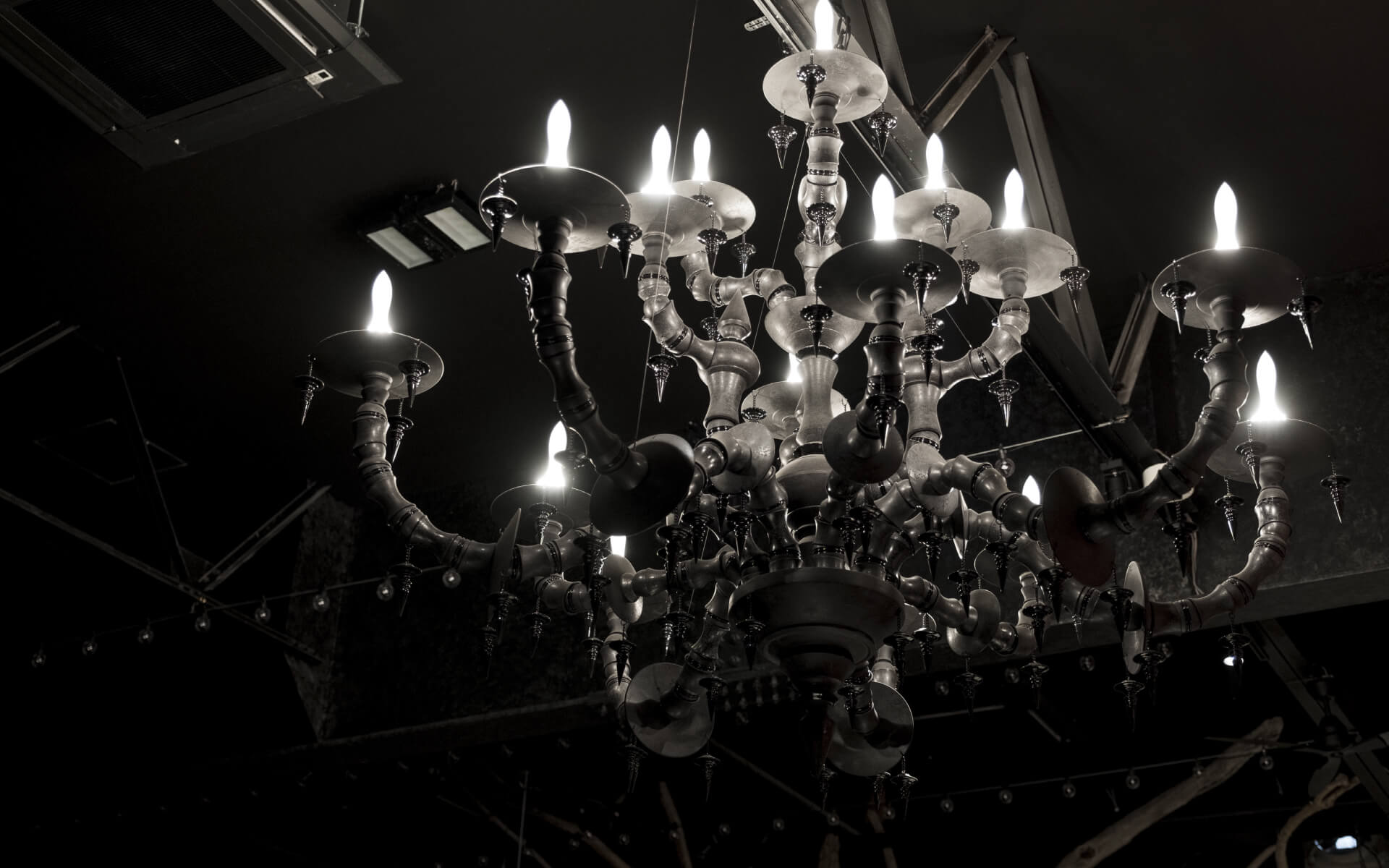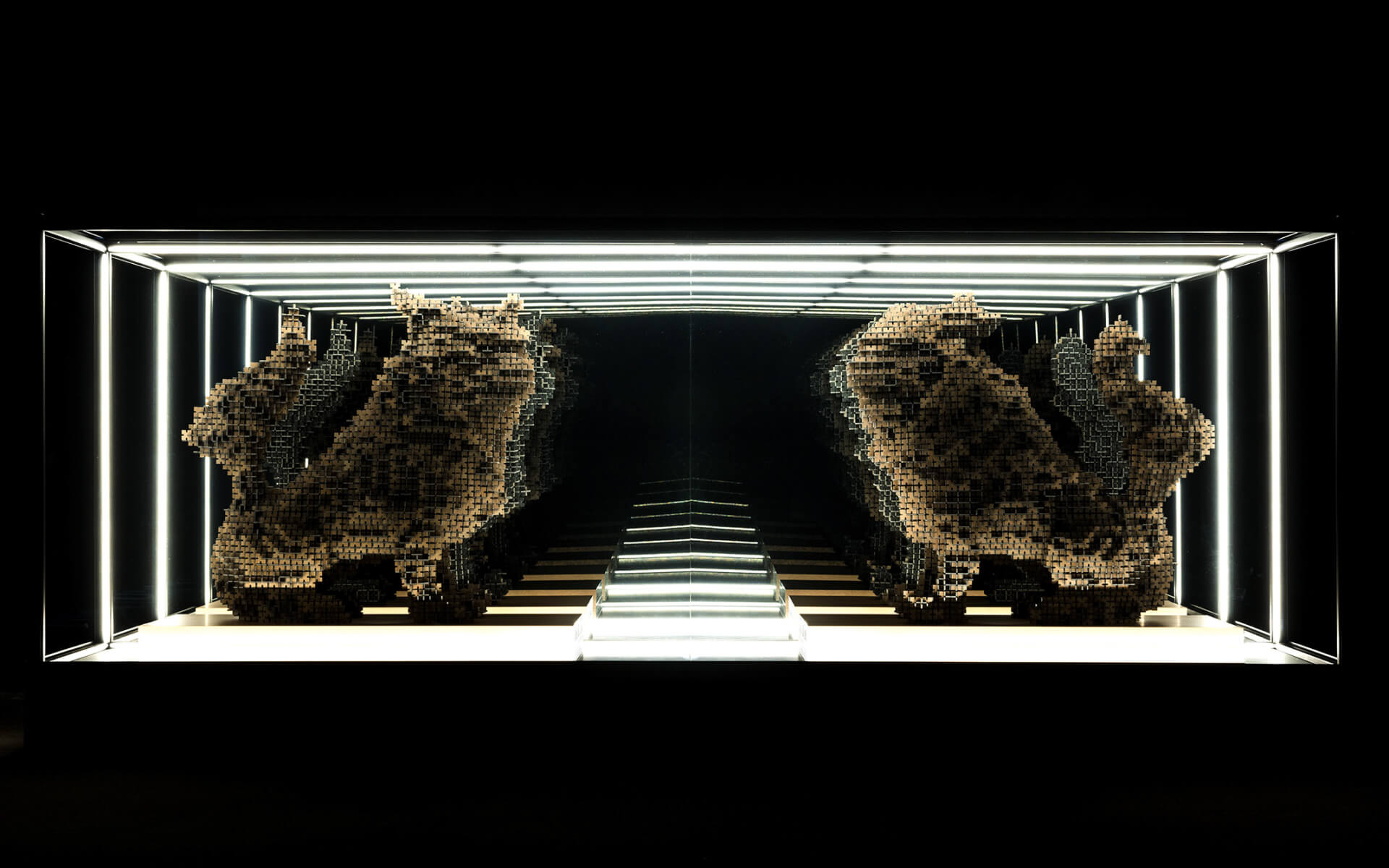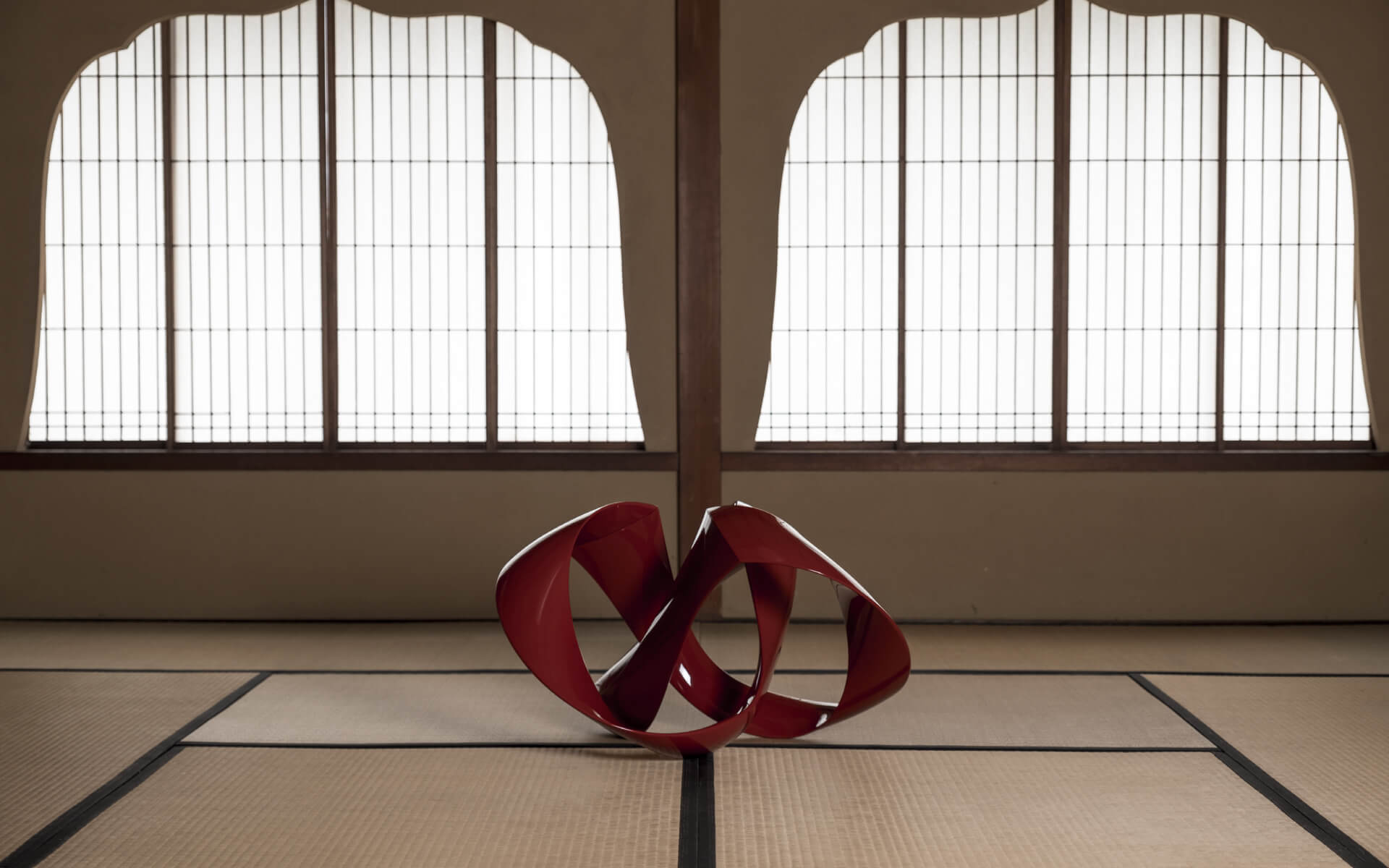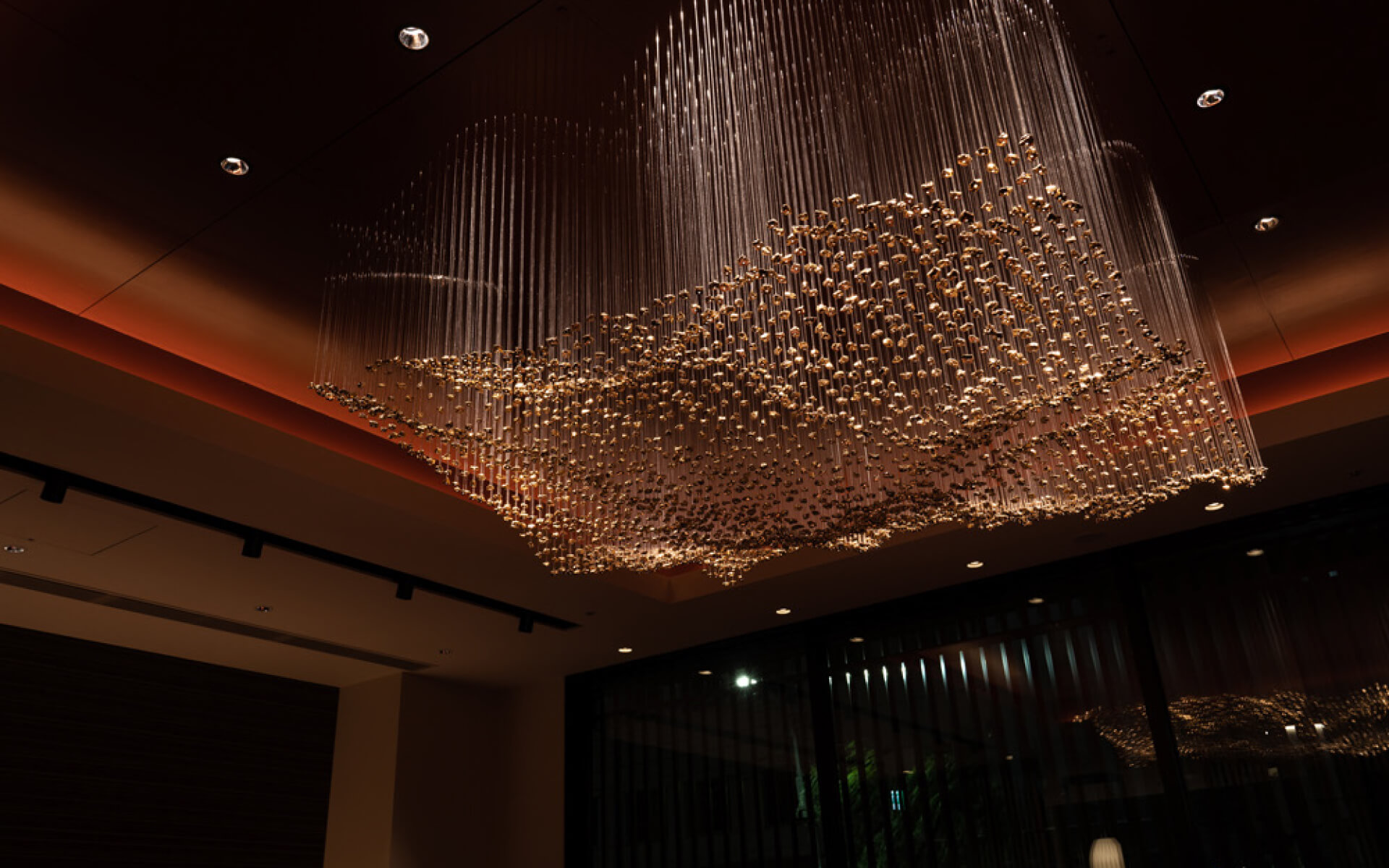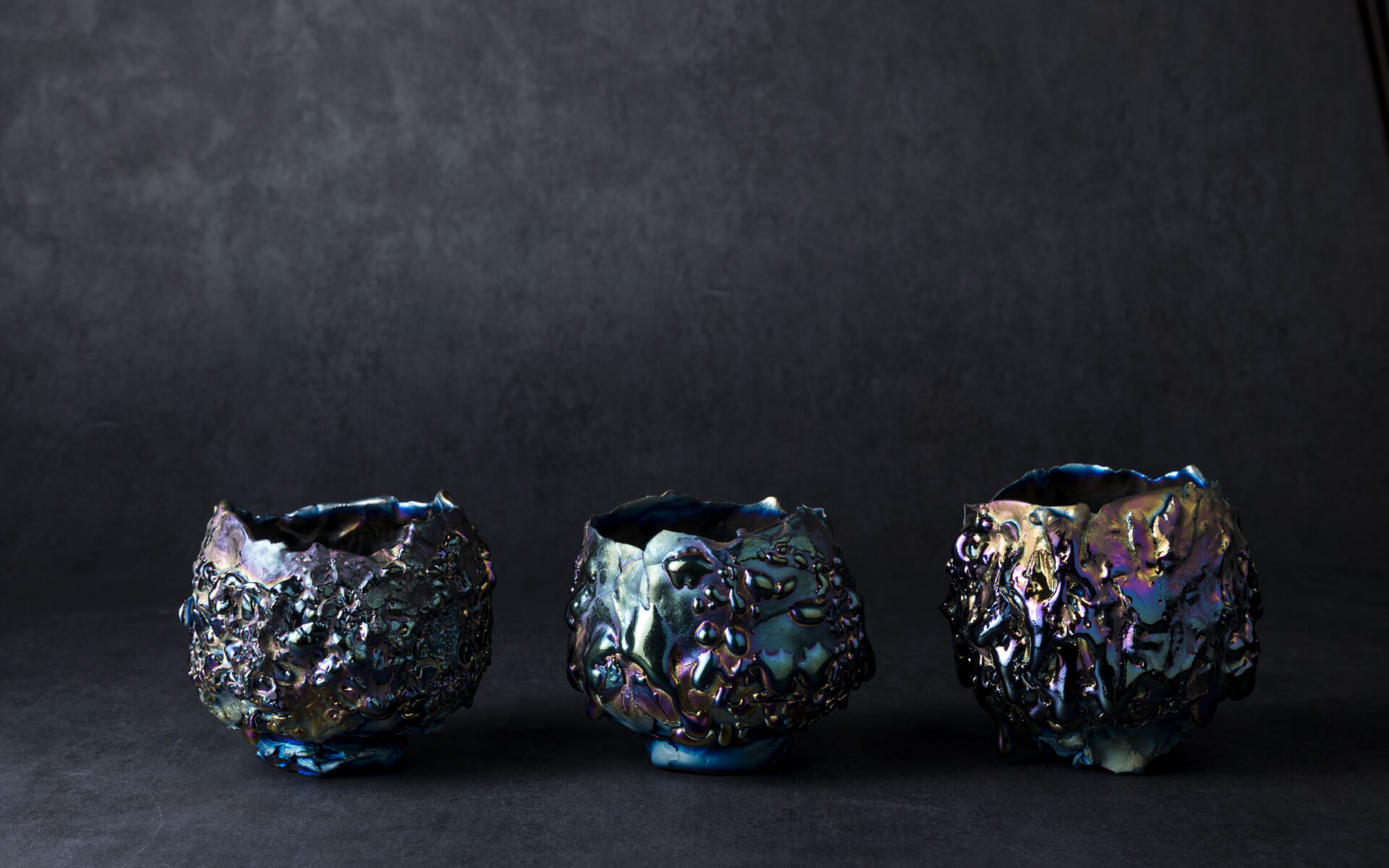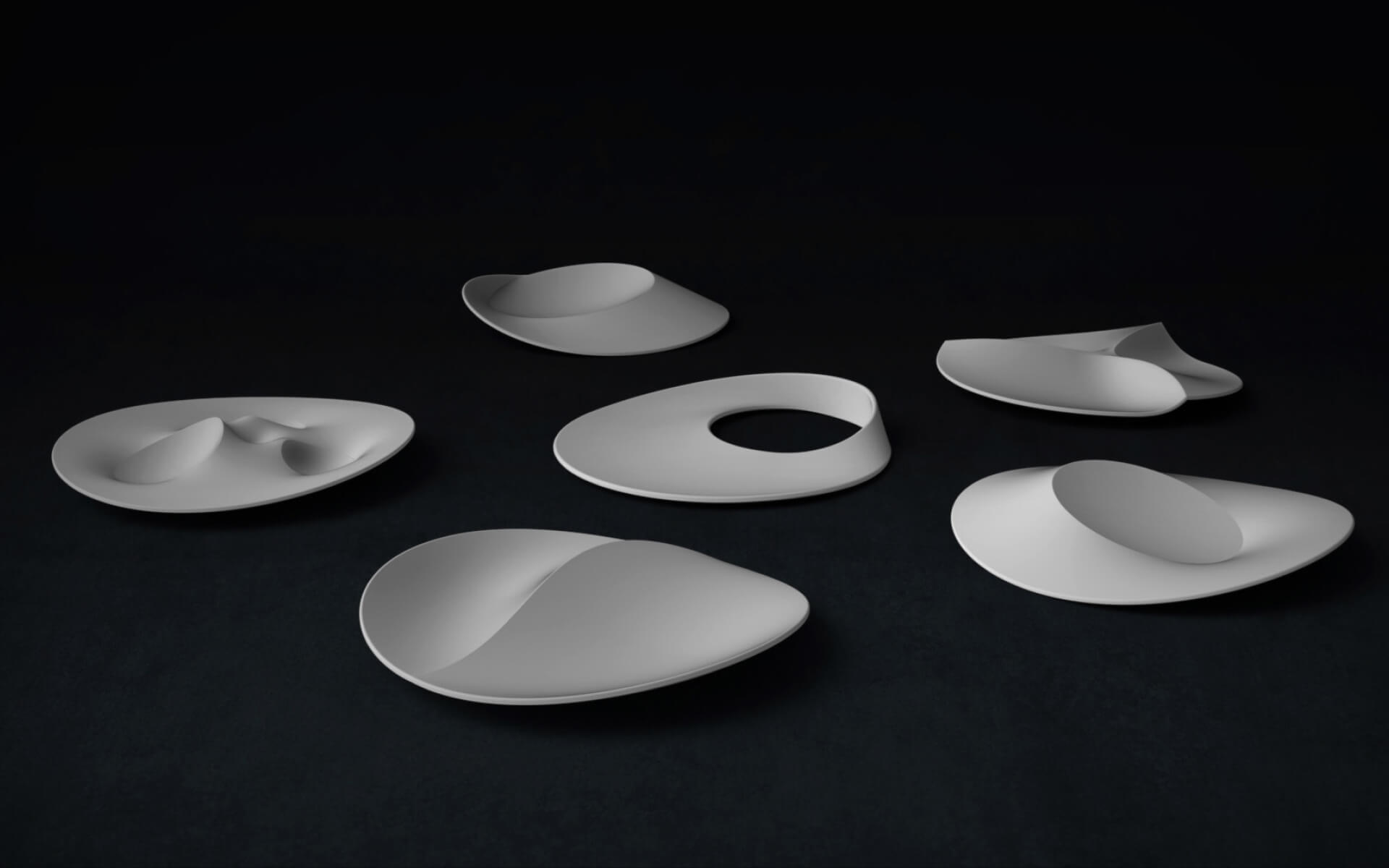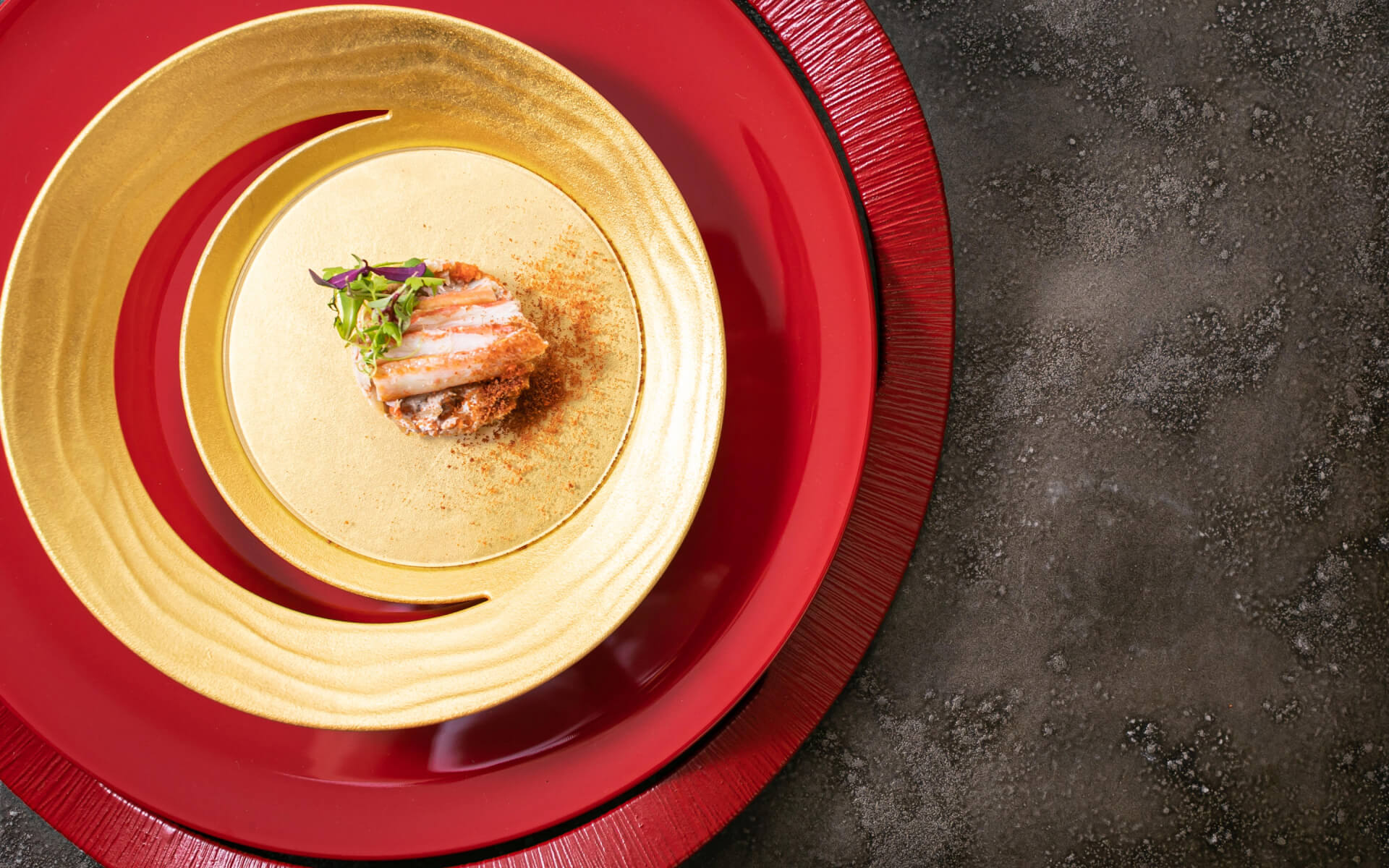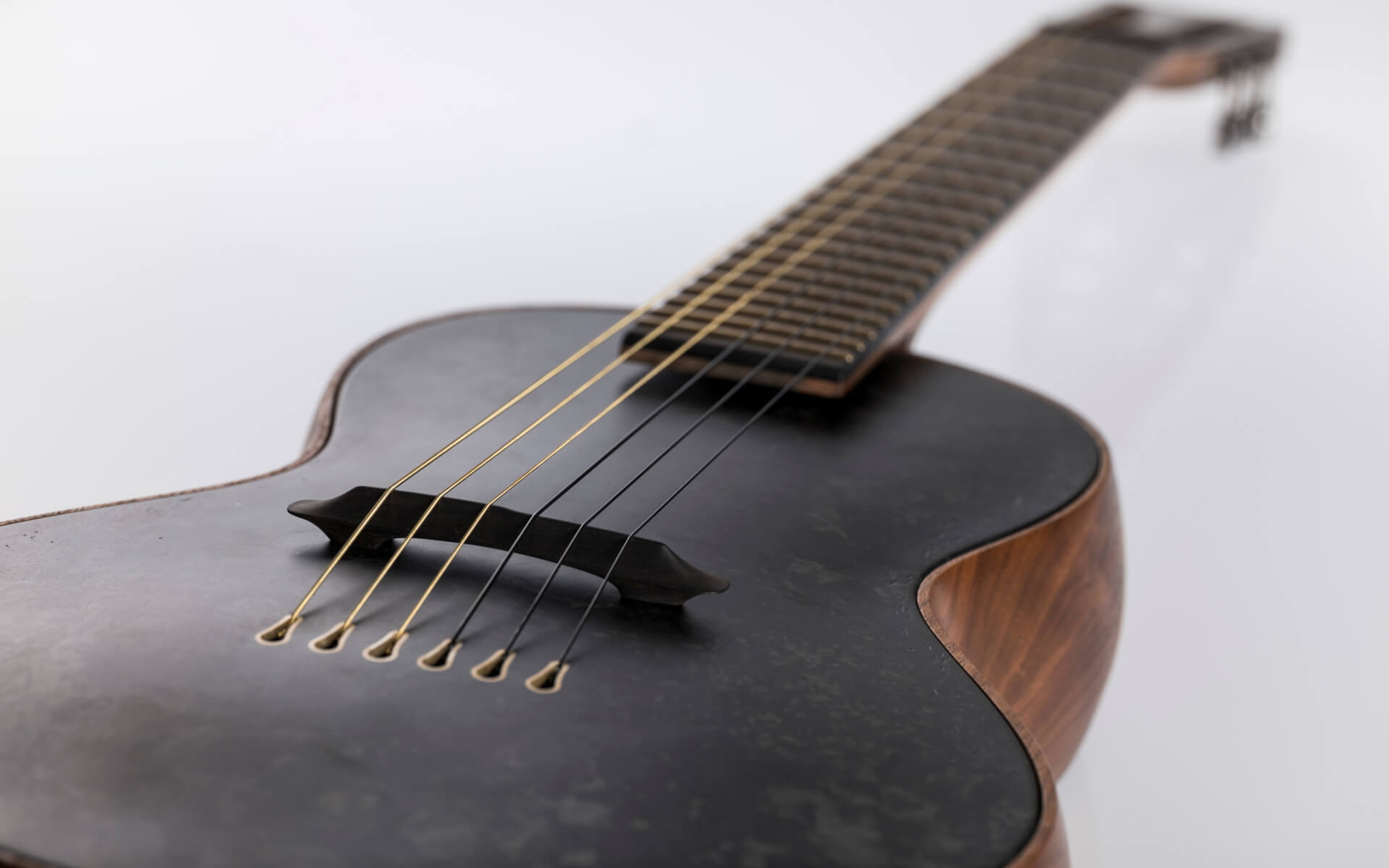WORKS 04Shingi
baked chandelier
物にはそれぞれ文化的背景から「格」が存在します。
焼き物の世界でいえば、茶道で使用される茶碗や花器、 日常においても酒器などが他の器と全く同じ原料やプロセスであっても格が高く、高値で取引されます。 当然それに、作者の技量や表現力、他者からの評価などが乗算され、 私たちが認識している「価値」という輪郭が現れてきます。
一方で、いわゆる雑器はアジア諸国から破格の低価格商品が大量に流入したこともあり、 今では100円で陶磁器が買える感覚が浸透し、 焼き物の産地ではこの市場価格に耐えきれず廃業が相次いでいる状況です。
本来、焼き物は素材と熱が生み出す他に類を見ぬ豊かな表情がとても魅力的な工芸技法で、 雑器とはいえここまで価値が希薄な現状に違和感すら感じています。 私たちは、焼き物産地と同じ量産技法を用いながらも、 デザインとアイデアでどこまでこの魅力的な陶磁器の「格」を高められるのか、挑戦することを作品としました。
荷重に耐えられる構造を担保し、美しく安全に電気配線を行うため、 金属フレームを綿密に設計すると同時に、金属フレームに対し焼き物で制作したパーツが意図したレイアウトで構成できるよう、 焼き物の収縮率等も考慮した設計を行いました。 こうして、約400個のパーツで構成された直径2メートルを超える焼き物のシャンデリアが出来上がりました。 工業と工芸の両側面の技術を扱うseccaらしい作品といえます。
燃焼現象が生み出す不均一でマットな釉調を纏った焼き物のシャンデリアが、暗闇を照らします。
[素材]
磁器、鉄フレーム
[サイズ]
W2,400mm D2,400m H1,400mm
焼き物の世界でいえば、茶道で使用される茶碗や花器、 日常においても酒器などが他の器と全く同じ原料やプロセスであっても格が高く、高値で取引されます。 当然それに、作者の技量や表現力、他者からの評価などが乗算され、 私たちが認識している「価値」という輪郭が現れてきます。
一方で、いわゆる雑器はアジア諸国から破格の低価格商品が大量に流入したこともあり、 今では100円で陶磁器が買える感覚が浸透し、 焼き物の産地ではこの市場価格に耐えきれず廃業が相次いでいる状況です。
本来、焼き物は素材と熱が生み出す他に類を見ぬ豊かな表情がとても魅力的な工芸技法で、 雑器とはいえここまで価値が希薄な現状に違和感すら感じています。 私たちは、焼き物産地と同じ量産技法を用いながらも、 デザインとアイデアでどこまでこの魅力的な陶磁器の「格」を高められるのか、挑戦することを作品としました。
荷重に耐えられる構造を担保し、美しく安全に電気配線を行うため、 金属フレームを綿密に設計すると同時に、金属フレームに対し焼き物で制作したパーツが意図したレイアウトで構成できるよう、 焼き物の収縮率等も考慮した設計を行いました。 こうして、約400個のパーツで構成された直径2メートルを超える焼き物のシャンデリアが出来上がりました。 工業と工芸の両側面の技術を扱うseccaらしい作品といえます。
燃焼現象が生み出す不均一でマットな釉調を纏った焼き物のシャンデリアが、暗闇を照らします。
[素材]
磁器、鉄フレーム
[サイズ]
W2,400mm D2,400m H1,400mm
Objects/goods have different "status" depending on respective cultural backgrounds.
In the world of pottery, tea bowls, floral organs, and sake cups tend to have higher status despite of the same or similar materials and processes are used, and being sold at higher prices. Needless to say, creator's techniques, the power of expression, and reputation are added values on top, and it finally start revealing outline of what we recognize as "value."
On the other hand, for various miscellaneous tablewares, extremely low-priced products flooded in from Asian countries, giving customers the sense that you can buy ceramic ware at 1$ and due to this ultimate trends have already made Japanese local manufacturers and producers close their business one after another.
Pottery is originally a very attractive crafts produced by rich expressions produced by traditional materials and high heat. Even for everyday-use, secca can't help feeling strange and thinking that why their values are so low nowadays.
Secca therefore used the same mass-production technologies and production sites but challenged ourselves to add "statuses" to our ceramic wares through our designs and ideas.
The metal frame was intricately designed to secure a structure that can withstand the weight and handle electric wiring beautifully and the pottery's contraction percentage was also considered in the design so that parts created through pottery can be structured in intended layouts as opposed to the metal frame.
A pottery chandelier was finally produced with a diameter of over two meters and composed of about 400 parts. The combustion phenomenon creates a non-uniform and matte glaze tone in this pottery chandelier, as it illuminates the night.
We believe this is very secca, transforming things by using both industrial and craft technologies.
[Material]
Porcelain, Steel frame
[Size]
W2,400mm D2,400m H1,400mm
In the world of pottery, tea bowls, floral organs, and sake cups tend to have higher status despite of the same or similar materials and processes are used, and being sold at higher prices. Needless to say, creator's techniques, the power of expression, and reputation are added values on top, and it finally start revealing outline of what we recognize as "value."
On the other hand, for various miscellaneous tablewares, extremely low-priced products flooded in from Asian countries, giving customers the sense that you can buy ceramic ware at 1$ and due to this ultimate trends have already made Japanese local manufacturers and producers close their business one after another.
Pottery is originally a very attractive crafts produced by rich expressions produced by traditional materials and high heat. Even for everyday-use, secca can't help feeling strange and thinking that why their values are so low nowadays.
Secca therefore used the same mass-production technologies and production sites but challenged ourselves to add "statuses" to our ceramic wares through our designs and ideas.
The metal frame was intricately designed to secure a structure that can withstand the weight and handle electric wiring beautifully and the pottery's contraction percentage was also considered in the design so that parts created through pottery can be structured in intended layouts as opposed to the metal frame.
A pottery chandelier was finally produced with a diameter of over two meters and composed of about 400 parts. The combustion phenomenon creates a non-uniform and matte glaze tone in this pottery chandelier, as it illuminates the night.
We believe this is very secca, transforming things by using both industrial and craft technologies.
[Material]
Porcelain, Steel frame
[Size]
W2,400mm D2,400m H1,400mm



